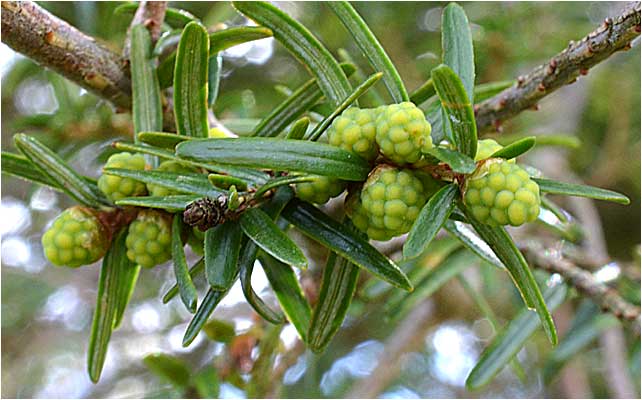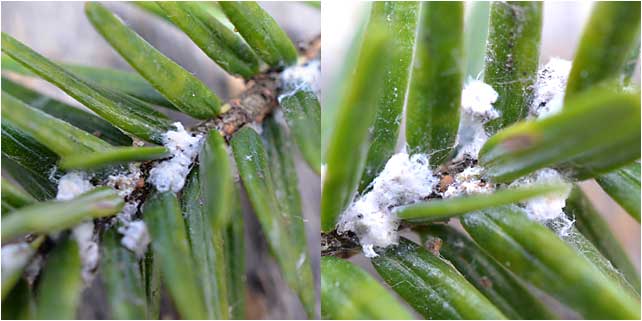43. EASTERN HEMLOCK
Tsuga canadensis

Eastern Hemlock was once one of the most common trees in northeastern forests. Also one of the oldest trees, with a potential lifespan of over 500 yrs. They love shade and water, and historically grew to great height and size.
SPRING, MALE POLLEN CONES

As you walk by a Hemlock tree in Spring, you may notice these very small, greenish-yellow orbs. These are the male pollen cones and appear for only a few weeks at most. Hemlocks are monoecious, meaning male and female flowers appear on the same tree. Since it is a conifer/evergreen, the term cone is typically used instead of flower - but the role is the same. These male structures provide pollen to fertilize female cones.
SPRING, FEMALE CONES

You can see both a male cone (round) and an emerging female cone (left). Mature cone (brown) and fertilized intermediate cone (green) also on right. The needles of Eastern Hemlock are only about 3/4 of an inch long, so all cones here are small. Hemlocks have the smallest cones of any Pine.
HEMLOCK WOOLY ADELGID

The woolly adelgid is an aphid-like invasive insect (Japan) which attacks Eastern Hemlocks. The insects are quite small, and they focus on the base of the needles. They stay in that spot and feed on nutrients in the trees. The telltale white "woolly" egg masses nurture the next generation of adelgids.